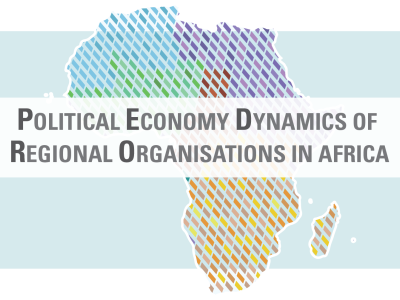
Ensuring the AfCFTA is implemented and applied
The African Continental Free Trade Area (AfCFTA) is an ambitious project to realise free trade across the African continent. But African businesses and citizens will only benefit from it if African governments comply with their obligations to implement the AfCFTA Agreement.
The AfCFTA and ‘compliance’
There is great enthusiasm for the creation of the ‘largest free trade area in the world’. However, the record in Africa reflects a lot of talking but not much doing when it comes to governments actually complying with the commitments they make in regional trade deals. Without compliance – ‘the fulfilment by member states of their obligations under an agreement’ – businesses and citizens can’t benefit from a regional trade agreement.
Establishing an effective compliance mechanism for the African Continental Free Trade Area (AfCFTA) would help ensure that the agreement does not end up existing only ‘on paper’. Recent analysis by IMANI Development for the Southern African Development Community (SADC) and Gesellschaft für Internationale Zusammenarbeit (GIZ) offers pointers on the sorts of compliance mechanisms that could be appropriate for the AfCFTA.
What makes an effective compliance mechanism?
A compliance mechanism is any instrument that promotes parties’ fulfilment of their obligations under a particular agreement. To determine what makes an effective compliance mechanism for a regional trade agreement, we assessed a range of different instruments used by regional blocs, such as, the East African Community’s Time-bound Programme for the Elimination of Non-tariff Barriers (NTBs) and the ASSIST mechanism adopted by the Association of Southeast Asian Nations (ASEAN).
Using the European Union (EU) system of compliance mechanisms as a benchmark, we concluded that an effective compliance mechanism needs to be able to do three things: (i) to identify when a member state may not be in compliance; (ii) to verify whether there is a case of non-compliance and what the underlying cause may be; and (iii) to offer ways to resolve the compliance challenge, either through dialogue and resourcing, or if necessary, through legal enforcement (see figure).
Figure 1. The three functions of an effective compliance mechanism

The tools of compliance
Regional organisations use different approaches and instruments to identify, verify and resolve non-compliance. One approach is to provide a framework for private sector whistleblowing. This can be done by establishing a way for companies and citizens to report – either online or via their associations – the trade barriers they experience. Here, the EU’s SOLVIT tool is a good model. SOLVIT includes an online portal that EU citizens and businesses can use to report and find solutions to problems pertaining to EU law. The COMESA-EAC-SADC ‘Tripartite’ online mechanism for reporting, monitoring and eliminating NTBs and ASEAN’s ASSIST are modelled on this approach, though operationalised to varying degrees of success.
Dialogue platforms and national contact points are also used for identification of non-compliance. The Tripartite NTB monitoring mechanism and the EAC’s Time-bound Programme for the Elimination of NTBs are examples. Under these programme (linked together in the context of the EAC), National Monitoring Committees (NMCs) bring together government and non-state actors (potentially from multiple countries) to explore solutions at a technical level.
Scorecards and compliance reviews are other ways to promote compliance. They increase transparency and surveillance by assessing the extent to which states are honouring commitments in terms of ratification, transposition and conformity of laws, regulations and procedures. The EAC Common Market Scorecard is a good example of success in identifying cases of non-compliance and the underlying regulatory or operational causes.
Another approach is to provide for peer review, often informed by investigative missions by regional commissions or secretariats, such as the African Peer Review Mechanism (APRM) Secretariat. Peer review can provide for transparency and surveillance, as often clearly-defined indicators are examined and members are required to explain any underperformance found. In some cases, such as in the EU, regional bodies also have the power to sanction member states for non-compliance.
Finally, disputes settlement can be provided for through a formal court or tribunal, such as the European Court of Justice and the EAC Court of Justice (and previously also the SADC Tribunal).
Lessons from existing mechanisms and approaches
We carried out reviews of various mechanisms to understand how they worked and to learn what has been effective and what not, and in what contexts. The key lessons are presented below.
Peer review mechanisms
Peer review mechanisms aim to increase compliance by enhancing transparency, surveillance and engagement with stakeholders, and by bolstering political will towards compliance. In this regard we found that:
● There is a trade-off between transparency and accountability. Governments are unlikely to be fully open to scrutiny if a review is linked to a trade dispute. This is why the WTO’s peer review process is separate from its dispute settlement system.
● Peer review is a powerful tool for technical assistance and learning and allows for compliance to be gradually ‘upgraded’. This was particularly evident from our study of the OECD Code of Liberalisation of Capital Movements.
● Targeted, secretariat-initiated reviews of specific instances of possible non-compliance can be very effective in raising awareness of an issue. But they are less effective in resolving non-compliance. This is an insight from APRM processes.
● Peer review mechanisms typically require substantial resources. The WTO’s Trade Policy Review Division has 51 staff, including economists, statisticians and secretaries. They provide technical assistance to developing and least-developed countries upon request. The APRM Secretariat has some 70 staff members who provide technical support across the four areas of governance subject to review. For this work, the APRM has an annual budget of US $10 million.
Variable geometry
Variable geometry initiatives aim to harness high level political attention to accelerate compliance in specific areas. Our case studies of the Accelerated Programme for Economic Acceleration (APEI) and the Northern Corridor Infrastructure Project (NCIP) revealed that variable geometry can be an effective means to promote compliance. However, when such initiatives are not anchored in an institutional and legal framework, momentum can wane as new political priorities emerge.
Integrated systems of monitoring and resolution
From our analysis and interviews with staff involved in the Tripartite NTB monitoring mechanism, we learnt the following:
● Identification, verification and resolution of NTBs is resource-intensive. The Rwanda National Monitoring Committee (NMC) project devoted US $1.86 million to this work from 2011 to 2016. The Tanzanian NMC project devoted $1.37 million from 2011 to 2017, and the Burundian NMC project devoted $587,137 for the 2011-2015 period. This amounts to $3.8 million from 2011 to 2017 for just three EAC states.
● Empowering NMCs and National Focal Points to conduct their own identification and verification missions is crucial.
● Targeted initiatives must be embedded in larger coordinated and integrated compliance frameworks.
Dispute settlement mechanisms
We investigated three dispute settlement mechanisms – those of the WTO, ASEAN and SADC. Our key findings were:
● African states do not generally initiate formal state-to-state dispute settlement procedures. Except as third parties, African countries have had very little involvement in the WTO’s dispute settlement system. There is, however, a recent notification regarding a dispute between Mauritius and Madagascar.
● Regarding the SADC Tribunal, before it was suspended, only natural or legal persons brought cases forward. No government used the Tribunal to hold another government to account for non- compliance with the Treaty and its Protocols.
● ASEAN member states use the WTO dispute settlement system rather than the ASEAN mechanism. It has been suggested that for countries to use the ASEAN mechanism the approach of ‘reverse consensus’ would have to be adopted. ‘Reverse consensus’ requires that a ruling be adopted unless there is a consensus among all countries against adoption. Such a consensus would be highly unlikely, as it would have to include the country that won the ruling.
What does this mean for the AfCFTA?
The AfCFTA involves a large number of countries. Moreover, parties to the AfCFTA Agreement are also parties to different regional economic communities (RECs) – each with their own compliance mechanisms and procedures. These factors make it difficult to draw implications from experiences of other regional trade agreements for the AfCFTA.
That said, the AfCFTA has a number of things going for it in terms of promoting compliance. First, the planned extension of the Tripartite NTB Monitoring Mechanism to the AfCFTA could provide a basis for ‘identification’ and a framework for ‘verification’ of non-compliance with the AfCFTA Agreement. And it will do so in a way that avoids duplication. However, we do note the resource intensity of supporting the monitoring committees at the national and regional levels. Without external support many of these committees have ceased to function.
Second, adoption of ‘reverse consensus’ in the dispute settlement process of the AfCFTA is welcome and removes a major disincentive to use the dispute settlement mechanism. But, given that the AfCFTA replicates the WTO procedures and allows only for state-to-state disputes, and that African states don’t typically initiate disputes against each other, there is a real danger that no cases will be brought under the AfCFTA Agreement.
With regard to other tools, such as scorecards and reviews, the number of countries involved in the AfCFTA and their participation in other RECs suggest that AfCFTA commitments should be incorporated into existing processes. The WTO Trade Policy Review would seem a particularly appropriate mechanism for this purpose. Nevertheless, the AfCFTA Secretariat should be equipped with the tools to carry out specific investigative missions, at its own discretion, to assess issues that are either not included within existing activities at the regional level, or which are of an urgent nature.
About the author
Dr. Nick Charalambides is a senior trade and regional integration expert, with over two decades of working experience in trade policy development, trade negotiations, and technical assistance on regional integration. He holds an LLM in International Business Law and Doctorate in Economics from Oxford University.
Read the full magazine issue






